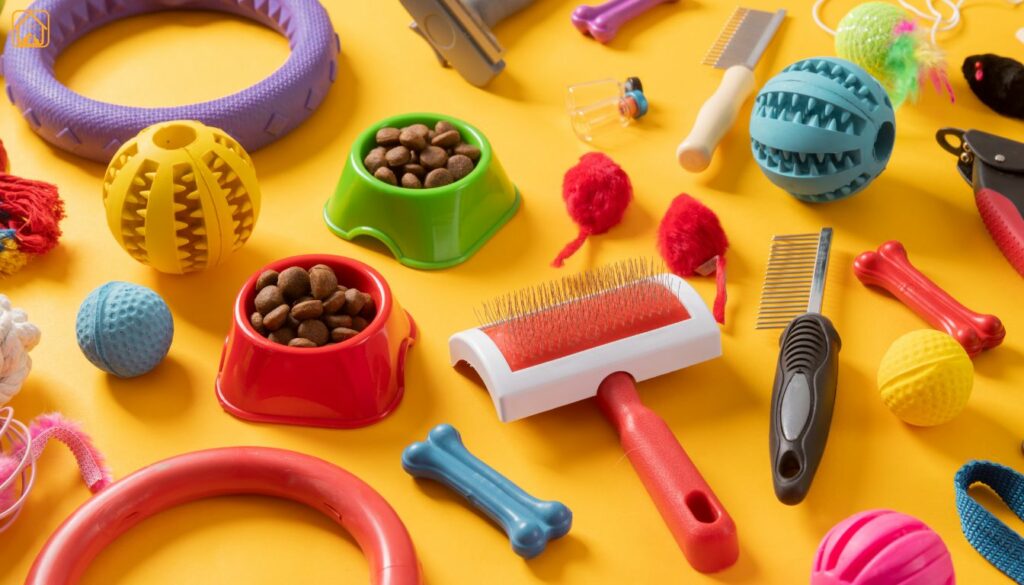Ever tried to teach your cat a new trick, only to have them blink at you like you’re speaking a different language? Honestly, I’ve been there. The secret isn’t just patience, it’s having the right cat training tools. With the right approach and supplies, training becomes less of a guessing game and more of a bonding adventure. Let’s dive into the world of cat training tools and get your feline friend on the path to good behavior and enrichment.
Essential Cat Training Tools: What Every Cat Owner Needs
Every cat parent needs a few core cat training tools to set the stage for success. Think of these as your starter kit, the basics that make almost any cat training method smoother and more effective.
Must-Have Cat Training Tools
- Clicker for Cat Training: This small device creates a click sound, marking the exact moment your cat does the desired behavior. Cats quickly learn to associate the click with a reward.
- Cat Treat Pouch: Having treats on hand is essential. A pouch keeps your cat’s favorite snacks ready to reinforce good behavior fast.
- High-Value Treats: Choose soft, smelly treats your cat loves, or even a lickable tube treat. The tastier, the better!
- Target Stick: A cat target stick helps guide your cat to specific spots or positions. Perfect for tricks like “touch” or “sit.” Some clickers include a built-in target.
- Cat Training Mat: A mat or towel signals a “training zone” or serves as a visual cue for behaviors like “sit” or “stay.”
I remember the first time I used a clicker kit with my cat, her eyes lit up with excitement every time she heard that click. It was like we finally spoke the same language. The right tools really do make all the difference.
Optional Cat Training Tools & Accessories to Enhance Success
Once you’ve got the essentials, these optional cat training tools can help you level up your sessions and make things even more fun (for both of you).
Tools That Make Training Easier
- Interactive Cat Toys: Wand toys, puzzle feeders, and lures keep your cat engaged during training and provide extra mental stimulation.
- Cat Training Harness and Leash: These are a must if you want to safely introduce your cat to the great outdoors or teach leash walking.
- Cat Scratching Pad: Redirect unwanted scratching to a designated spot and reward your cat for using it.
- Pheromone Spray or Plug-In: Cat pheromone sprays can help calm anxious kitties and set a positive mood for training.
- Automatic Spray Cat Deterrent: For persistent problem spots, these devices can gently discourage unwanted behavior (just use them thoughtfully!).
Not every cat needs every tool, but having a variety can keep sessions fresh and tailored to your cat’s personality. You know what’s funny? My shy tabby only came out for training once I added a feather lure to the mix.
How to Use Cat Training Tools: Methods and Best Practices
So, you’ve got your cat training tools, now what? The key is using them with clear, consistent cat training methods. Positive reinforcement is the gold standard: reward wanted behaviors and ignore or redirect the rest.
Step-by-Step: Clicker Training for Cats
- Charge the Clicker: Click, then immediately offer a treat. Repeat until your cat looks for a treat when they hear the click.
- Mark Desired Behavior: When your cat does something you want (like sitting), click at that moment and give a treat.
- Repeat & Add Cues: Once your cat is repeating the behavior, add a verbal cue (“sit,” “touch,” etc.).
- Keep Sessions Short: Cats learn best in 3-5 minute bursts. End on a high note!
Target sticks are great for teaching movement-based tricks, while a treat pouch keeps your rewards quick and easy to access. And remember: patience is huge. Some days your cat will nail it, other days, not so much. That’s normal.
Choosing the Right Tools: Quality, Safety, and Suitability
With so many cat training tools and accessories out there, it’s easy to get overwhelmed. But quality and safety always come first.
What To Look For in Cat Training Tools
- Sturdy Construction: Tools should be well-made and free from sharp edges or small parts that could be swallowed.
- Comfort: Harnesses and collars should fit snugly but not tightly. Soft materials are best.
- Non-Toxic Materials: Ensure toys and sprays are safe if licked or chewed.
- Positive Reviews: Check what other cat parents and pros say before buying.
If you’re wondering, “Can cats use tools safely?”, the answer is yes, with the right products and supervision. Always introduce new supplies slowly and watch your cat’s response.
Cat Training Tools for Specific Behaviors (Sitting, Leash, Deterrents, Enrichment)
Let’s get real: different behaviors call for different cat training aids. Whether you want to teach your cat to sit, walk with a harness, or stop scratching the sofa, there’s a tool for that.
| Behavior | Recommended Tool | Method |
| Sitting | Clicker, target stick, treats | Guide cat to sit, click & reward |
| Leash Walking | Cat harness and leash, treats | Introduce gear slowly, reward calm behavior |
| Deterrence | Cat training mat, automatic deterrent spray | Place on off-limits surfaces to discourage access |
| Enrichment | Interactive cat toys, scratching pad | Provide daily playtime, reward positive play |
One time, I used a pheromone spray to help my stressed-out foster cat relax enough to try harness training, and within a week, she was exploring the backyard calmly. The right mix of tools and patience can work wonders.
Common Mistakes and Tips for First-Time Users
- Trying to train when your cat is tired or distracted. Pick times when your cat is alert and relaxed.
- Using the wrong treats. If your cat isn’t excited, try something tastier!
- Inconsistent cues or timing. Always click and reward immediately.
- Pushing your cat too fast. Go at their pace, and keep sessions short.
- Forgetting to have fun. Celebrate small wins, training should be enjoyable for both of you.
Trust me, every cat has an off day. If things don’t go smoothly, just pause and try again later. Progress, not perfection!
Expert Recommendations: Building Your Cat Training Kit
Wondering what should go in your cat training tool kit? Here’s a quick cat tools list from pros and experienced cat parents:
- Clicker (or clicker training kit for cats)
- Cat treat pouch and a few high-value treats
- Target stick
- Comfortable harness and leash
- Interactive toys (wand, puzzle, lure)
- Cat pheromone spray (for calm sessions)
- Cat training mat or designated spot
- Notebook or app to track progress
Build your kit based on your goals and your cat’s personality. You’ll be amazed at how much easier (and more fun) training becomes!
Future Trends in Cat Training Tools & Technology
The world of cat training tools keeps evolving, smart gadgets and enrichment tools are on the rise. Expect to see:
- Automatic feeders and puzzle toys that respond to your cat’s progress
- Wearable tech (activity trackers for cats!)
- App-connected training tools for step-by-step guidance
- Live monitoring cameras with treat dispensers
FAQs About Cat Training Tools
What are cat training tools, and why are they useful?
Cat training tools are items like clickers, target sticks, treat pouches, and interactive toys designed to help shape your cat’s behavior through positive reinforcement. They make communication clearer and help teach new skills or curb unwanted actions.
What’s the best cat training tool for beginners?
A clicker training kit for cats (which may include a clicker, target stick, and training guide) is a great place to start. It’s simple, effective, and works for most behaviors.
Can cats use tools, or is that just for dogs?
Cats absolutely can use training tools! While they don’t fetch like dogs, cats can learn to respond to clickers, follow target sticks, and even walk on harnesses. It’s all about using the right approach and rewards.
How do I know which cat training tools are right for my cat?
Consider your cat’s personality and goals. For active or playful cats, interactive toys and target sticks work well. If your cat is shy, start with gentle clicker training and treats. Safety and comfort always come first.
Do cat training tools really work for older cats?
Yes! Cats of all ages can learn with patience and the right tools. Senior cats might need shorter sessions or softer treats, but they’re never too old to pick up new tricks or improve behavior.
Are there cat training tools for problem behaviors like scratching or jumping on counters?
Definitely. Cat scratching pads redirect scratching, training mats or deterrent sprays keep cats off unwanted surfaces, and pheromone sprays can calm stress-related mischief. Consistency is key for results.
What should I avoid when using cat training tools?
Avoid punishment-based tools or anything that scares or hurts your cat. Focus on positive reinforcement and patience. If a tool isn’t working, adjust your approach or consult a feline behavior expert.
Conclusion
Training your cat doesn’t have to be a struggle, it can be a shared journey filled with small victories and stronger bonds. With the right cat training tools and a little patience, you’re not just teaching commands, you’re building trust. Start small, stay consistent, and enjoy watching your cat grow with you.



